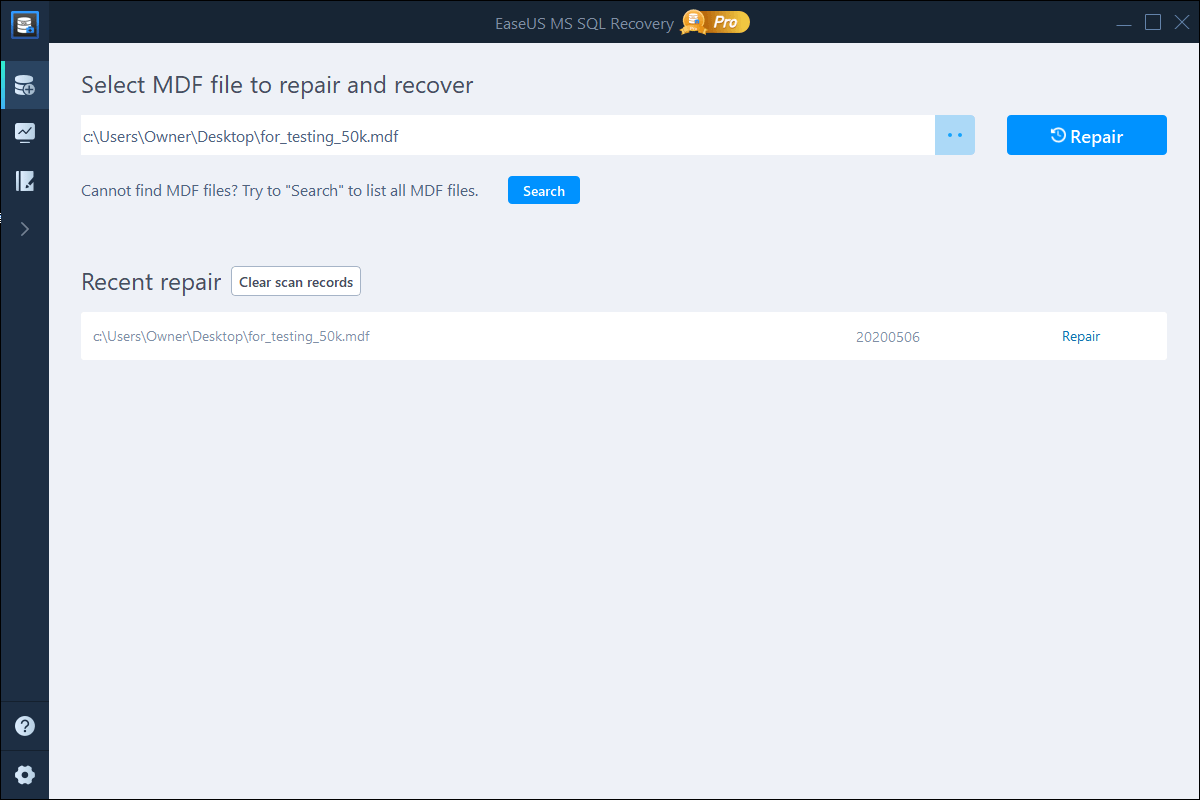How to Rollback DROP/TRUNCATE Table in SQL Server
Cedric updated on Nov 27, 2024 to MS SQL Database Recovery | How-to Articles
Both DROP and TRUNCATE will delete the table from the database. It happens that you may want to recover the table after DROP or TRUNCATE. With the help of EaseUS MS SQL Recovery, you can recover the dropped or truncated table as you like.
"Can a DROP TABLE be rolled back?" and "Can we rollback TRUNCATE TABLE?" are frequently asked by users who accidentally use the DROP TABLE or TRUNCATE TABLE command to remove table-related data from an SQL database. If you have the same confusion, you will get the answer immediately from the paragraphs below.
Both DROP and TRUNCATE are used to remove tables in the SQL database. But each works in different ways. Let me explain these terms in detail.
As you can see, the difference between DROP and TRUNCATE is obvious: DROP TABLE deletes everything related to the table and TRUNCATE TABLE only removes rows in the table.
Yes, you can. With the Microsoft SQL recovery tool - EaseUS MS SQL Recovery, you will be able to recover the truncated table or recover the table after DROP. EaseUS MS SQL Recovery is a powerful tool to recover deleted or corrupted SQL database data. It can restore deleted SQL data in most of the situations and repair the corrupted database (the MDF and NDF files).
When it comes to rolling back DROP TABLE or TRUNCATE TABLE, there are some details you should know before you try:
To undo DROP or TRUNCATE using the SQL recovery tool, you just need to select the MDF file to analyze, choose the table you want to recover, and then export it to the database. Here are the detailed steps:
Step 1. Run EaseUS MS SQL Recovery.
Step 2. Select the MDF/NDF file: Click "Browse" or "Search” to navigate the location of your MDF or NDF file > Click "Repair".

Step 3. Select the database objects you want to recover: When the process has completed, select the database objects you want to recover and click "Export".
Step 4. Export the database to the database or export the selected items as SQL scripts. If you choose "Export to database", you will need to enter the required information and select the destination database, either a new one or an existing one.
Other than the DROP TABLE and TRUNCATE TABLE, there is another one that always appears together with them, DELETE TABLE. The DELETE TABLE statement deletes the existing records in a table. That means the table remains but there is no record in it. You may wonder what's the difference between TRUNCATE TABLE and DELETE TABLE since they both delete records. Simply speaking, both TRUNCATE and DELETE remove rows from the table but keep the table. The TRUNCATE command is like a DELETE command without the where clause. Thus, TRUNCATE TABLE is faster since it spares you from scanning the table to find the selected rows. You can also recover deleted records easily from the table using EaseUS MS SQL Recovery if you need to.
It happens that you delete a table from the SQL database and later realize you need it. Luckily, you can roll back both the DROP TABLE and TRUNCATE TABLE commands to recover the deleted items, be it the table or the records in it. Hope the EaseUS SQL recovery tool can help you undo DROP/TRUNCATE and recover the data you need for you.
Related Articles
How to Fix Microsoft SQL Server Error 5123
How to Fix A Corrupted SQL Server Transaction Log File
[Fixed] SQL Error 945 | Database Cannot Be Opened due to Inaccessible Files
SQL to XML | How to Export Data from SQL Server to XML